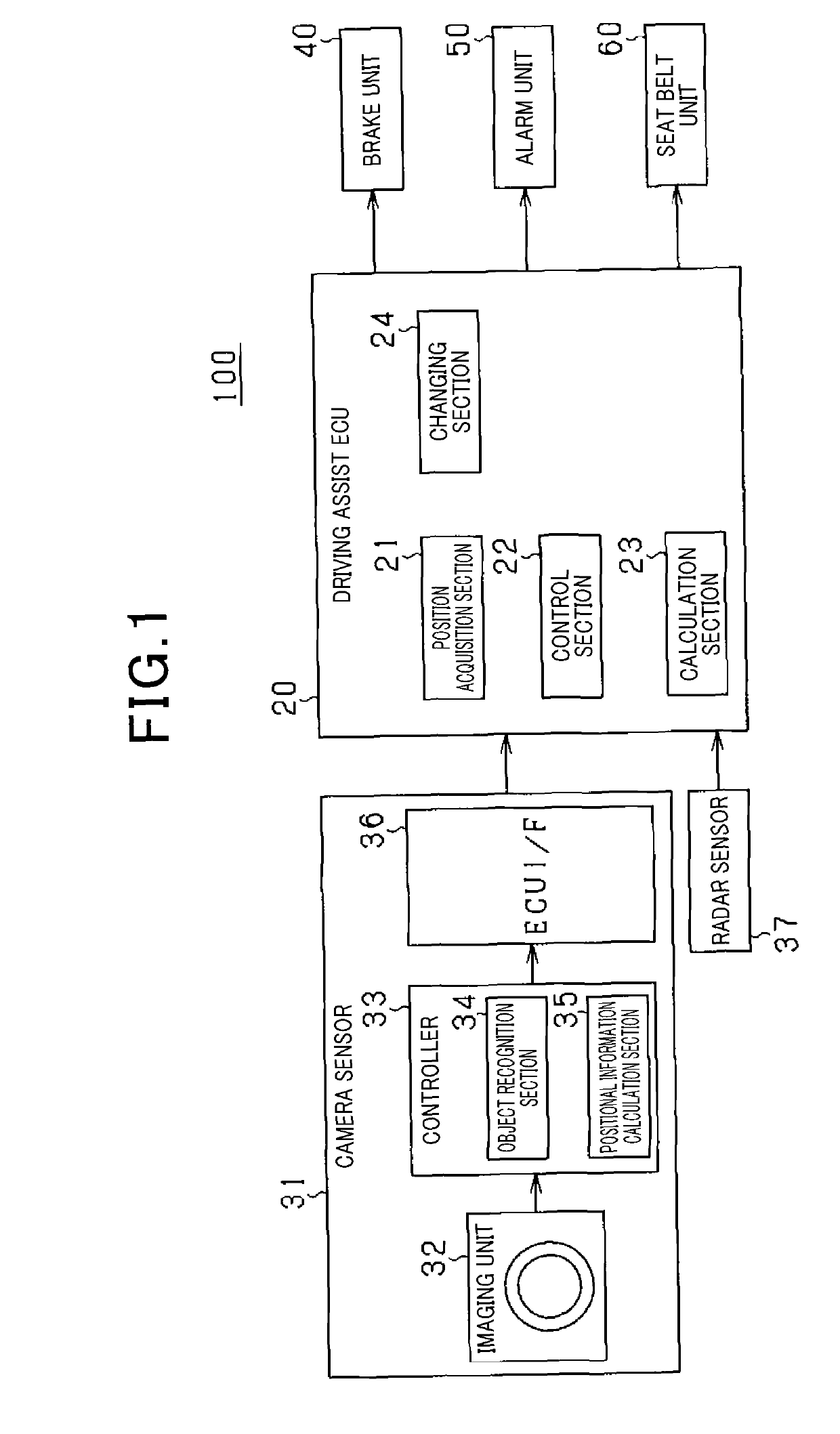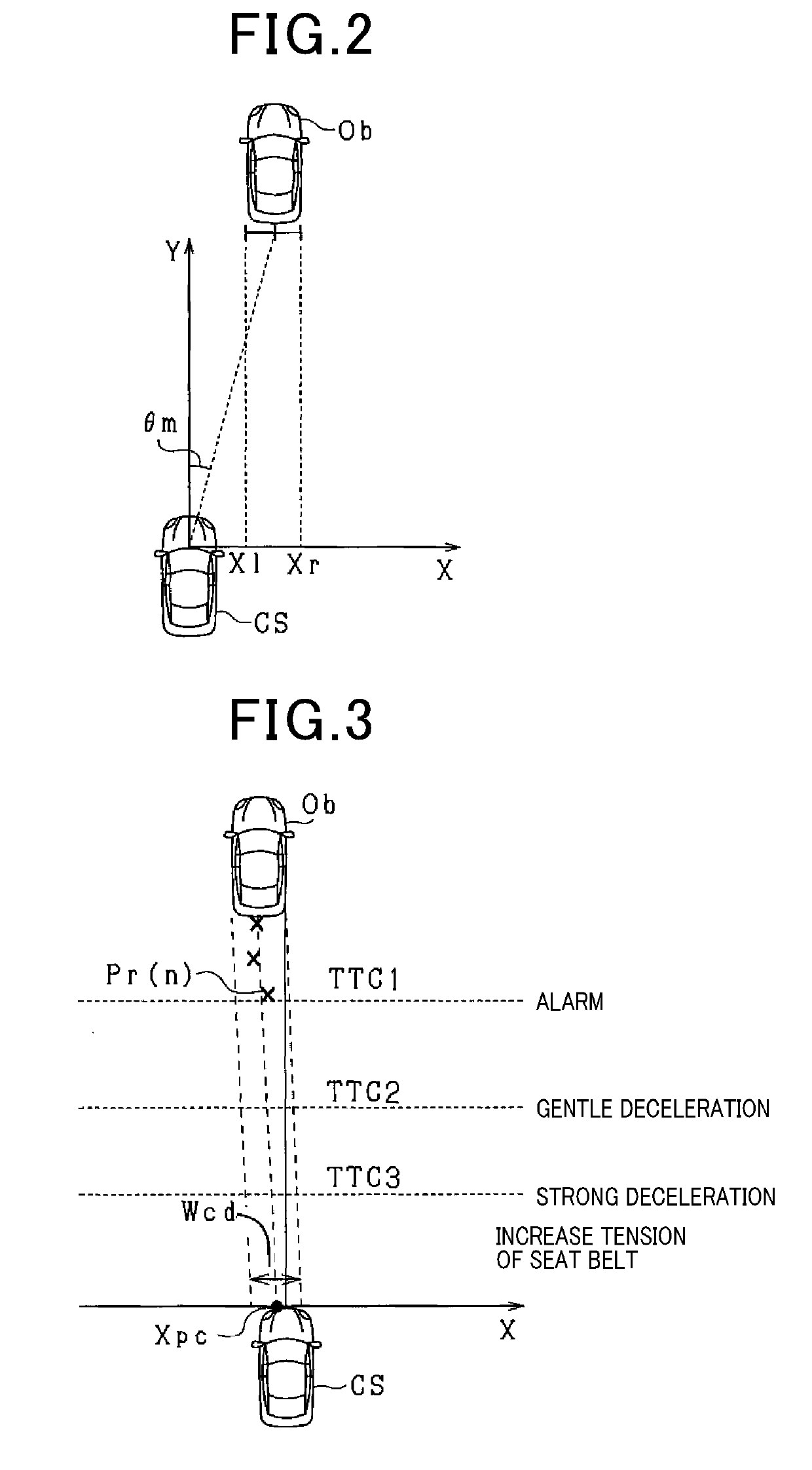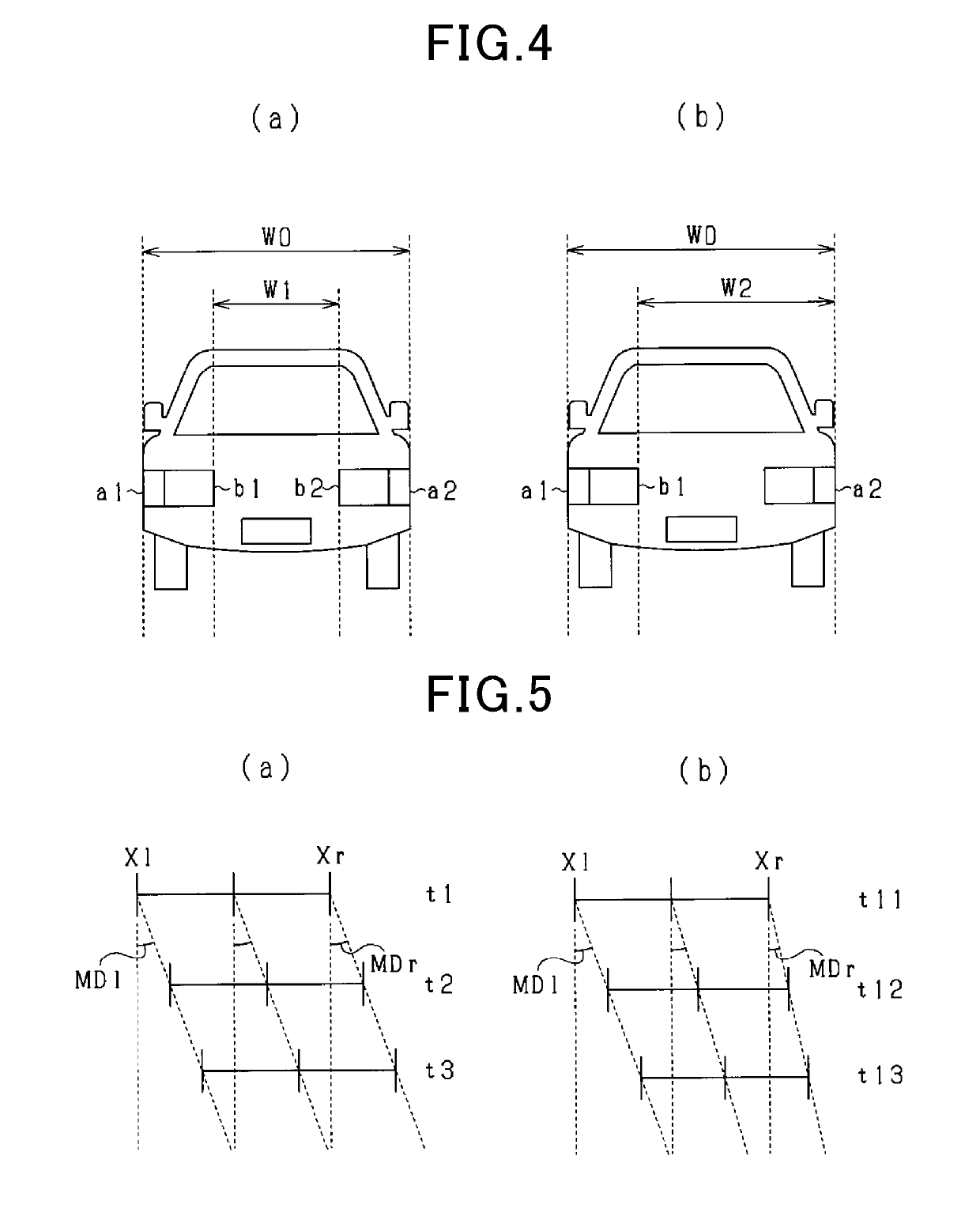Vehicle control apparatus and vehicle control method
a technology of vehicle control and control apparatus, which is applied in the direction of pedestrian/occupant safety arrangement, scene recognition, instruments, etc., can solve the problems of high probability of improper acquisition of specific points, and unnecessary operation in various types
- Summary
- Abstract
- Description
- Claims
- Application Information
AI Technical Summary
Benefits of technology
Problems solved by technology
Method used
Image
Examples
first embodiment
[0022]FIG. 1 illustrates a pre-crash safety system (hereinafter referred to as a PCSS) 100 to which a vehicle control apparatus and a vehicle control method are applied. The PCSS 100 is an example of a vehicle system installed in a vehicle, for example, and detects an object located ahead. In the event that the vehicle is in danger of colliding with the detected object, the PCSS 100 avoids or mitigates the collision between the vehicle and the object. Hereinafter, a vehicle equipped with the PCSS 100 is referred to as an own vehicle CS, and an object to be detected is referred to as a target Ob.
[0023]As illustrated in FIG. 1, the PCSS 100 includes various sensors, a driving assist ECU 20, a brake unit 40, an alarm unit 50, and a seat belt unit 60. In the embodiment illustrated in FIG. 1, the driving assist ECU 20 functions as a vehicle control apparatus.
[0024]Various sensors are connected to the driving assist ECU 20 to output the result of detecting the target Ob to the driving ass...
second embodiment
[0068]In the second embodiment, the driving assist ECU 20 changes how to perform PCS on the basis of the difference ΔMD in the movement direction and the relative speed Vr of the target Ob with reference to the own vehicle CS. As used herein, the relative speed Vr with reference to the own vehicle CS means a value obtained by subtracting the own vehicle speed Vs from the relative speed Vr of the target Ob. In the present embodiment, the direction in which the target Ob moves close to the own vehicle CS is a positive direction, and the direction in which the target Ob moves away from the own vehicle CS is a negative direction.
[0069]FIGS. 9(a) and 9(b) illustrate changes of lateral positions of targets Ob having different relative speeds Vr. The target Ob illustrated in FIG. 9(a) has a smaller relative speed Vr than that of the target Ob illustrated in FIG. 9(b).
[0070]The movement direction MD of a lateral position can also be expressed by a ratio between the relative speed Vy of the ...
third embodiment
[0076]In the third embodiment, in a case where the driving assist ECU 20 changes how to perform PCS, the driving assist ECU 20 makes the operation easy or difficult to activate using different degrees of change.
[0077]FIG. 10(a) illustrates an example of temporal changes of the difference ΔMD in the movement direction during periods T1 to T3. In FIG. 10(a), the difference ΔMD (|MDr−MDl|) in the movement direction temporarily becomes small during period T2 compared with those during periods T1 and T3. In this case, the reduction of the difference ΔMD in the movement direction during period T2 is accidental. Therefore, even though the determination region Wcd is reduced for making the operation of PCS easy to activate, the difference ΔMD in the movement direction increases again during period T3, and the determination region Wcd has to be expanded. In addition, expanding the determination region Wcd is not preferable because it is liable to facilitate unnecessary operation of PCS.
[0078...
PUM
 Login to View More
Login to View More Abstract
Description
Claims
Application Information
 Login to View More
Login to View More - R&D
- Intellectual Property
- Life Sciences
- Materials
- Tech Scout
- Unparalleled Data Quality
- Higher Quality Content
- 60% Fewer Hallucinations
Browse by: Latest US Patents, China's latest patents, Technical Efficacy Thesaurus, Application Domain, Technology Topic, Popular Technical Reports.
© 2025 PatSnap. All rights reserved.Legal|Privacy policy|Modern Slavery Act Transparency Statement|Sitemap|About US| Contact US: help@patsnap.com



